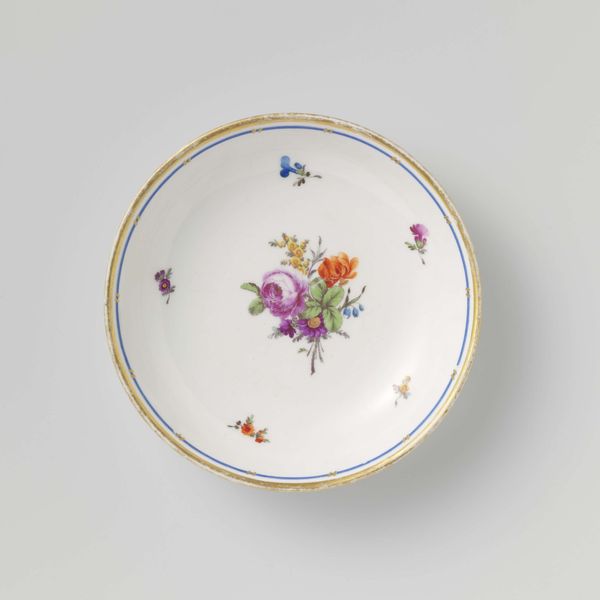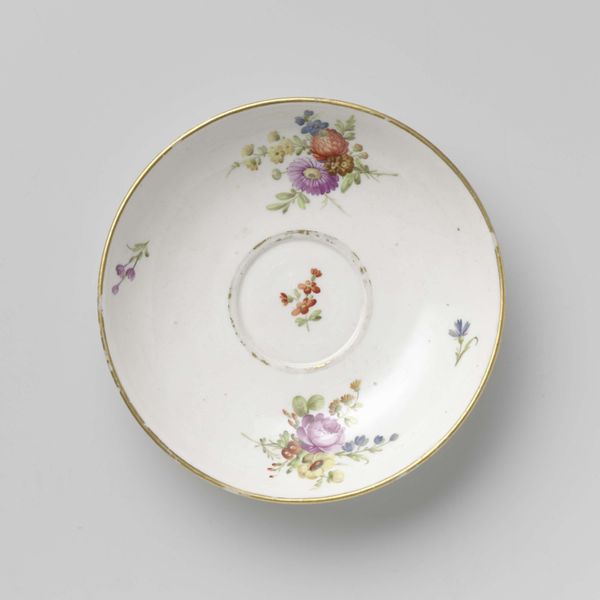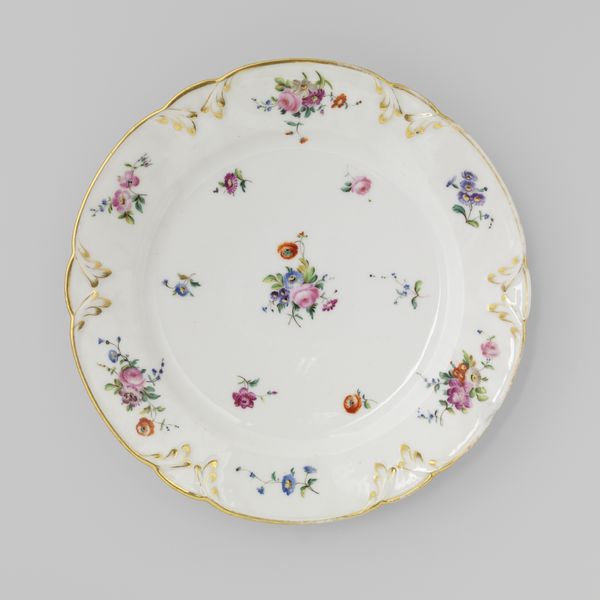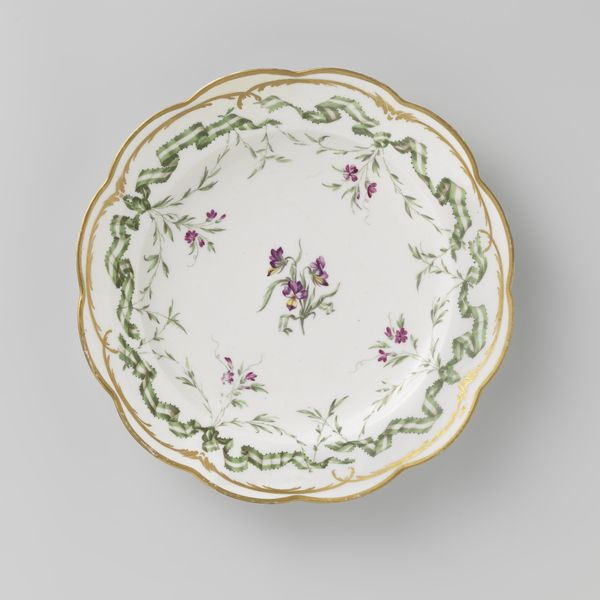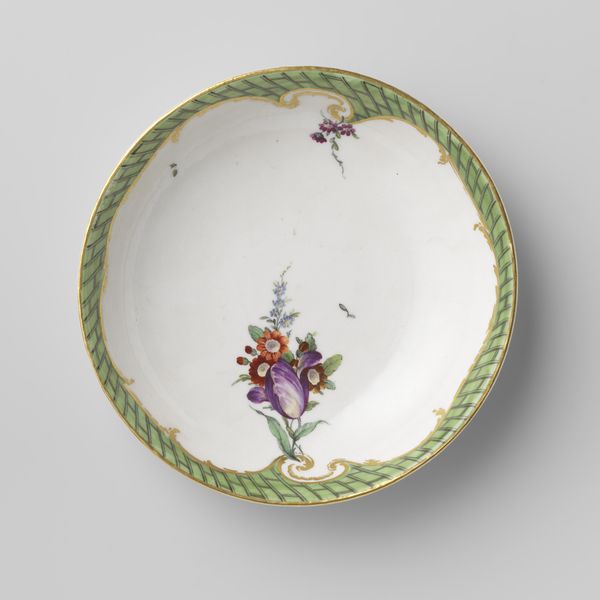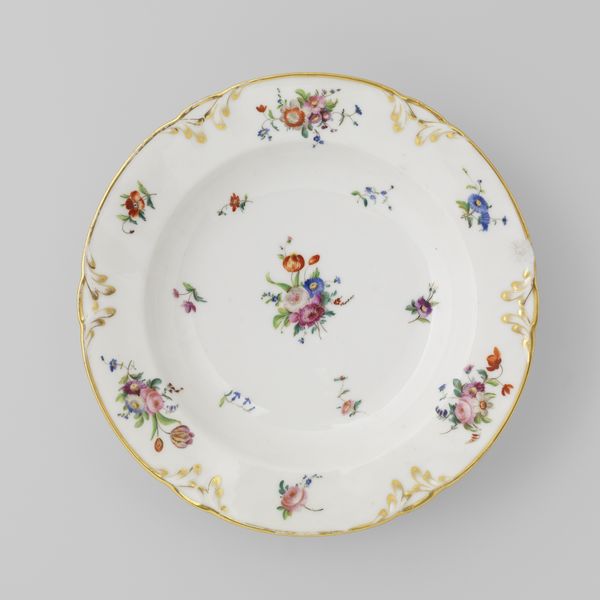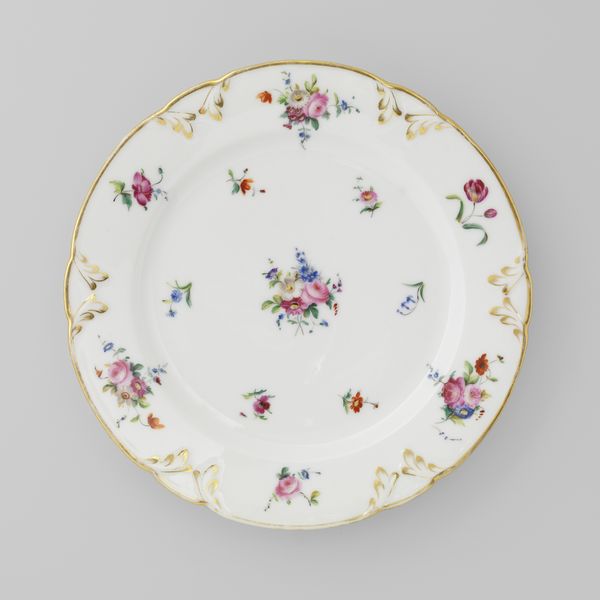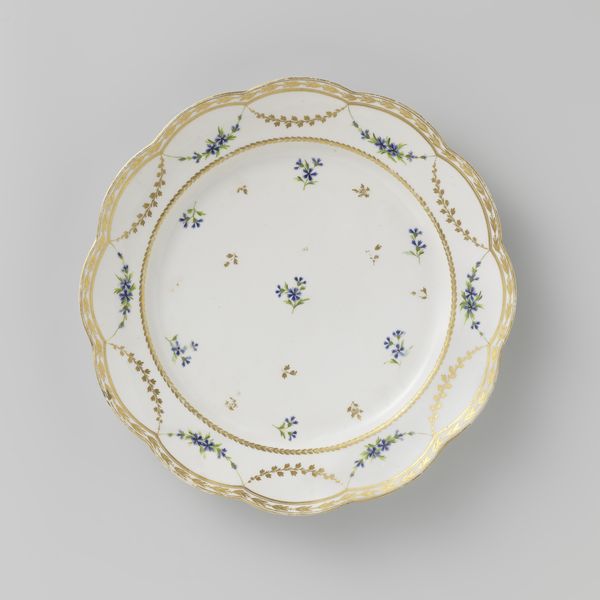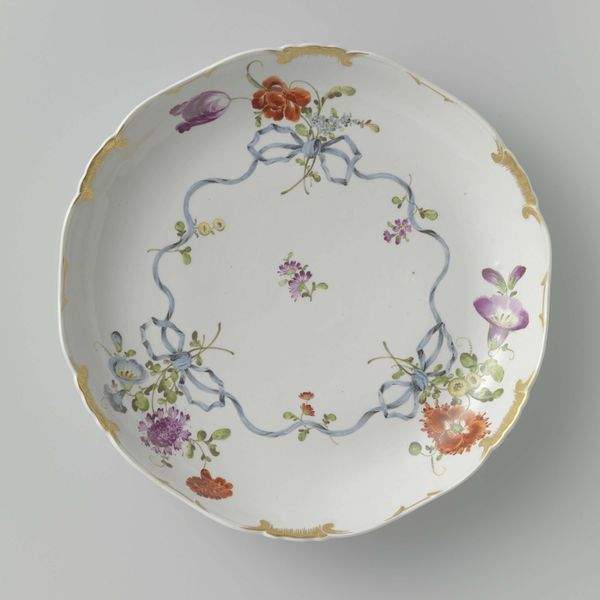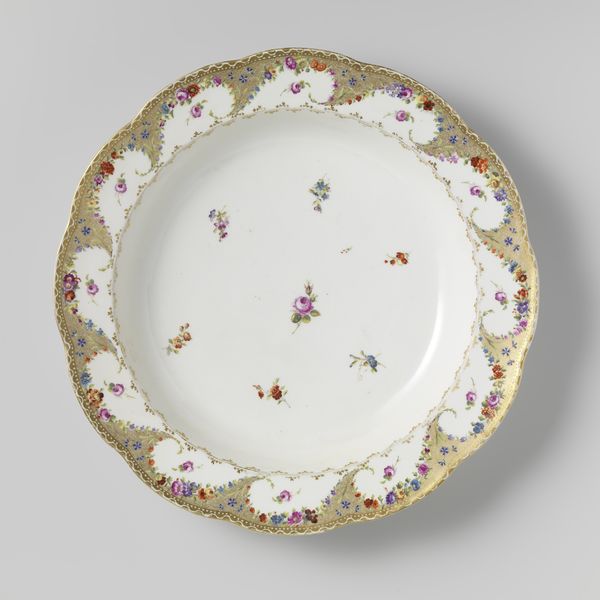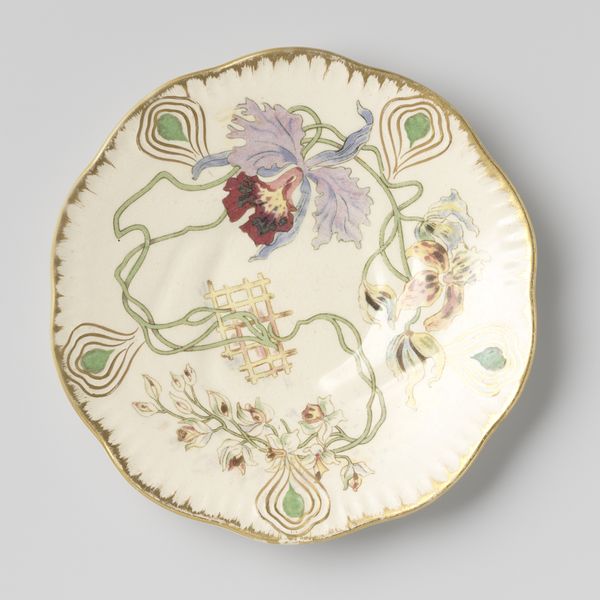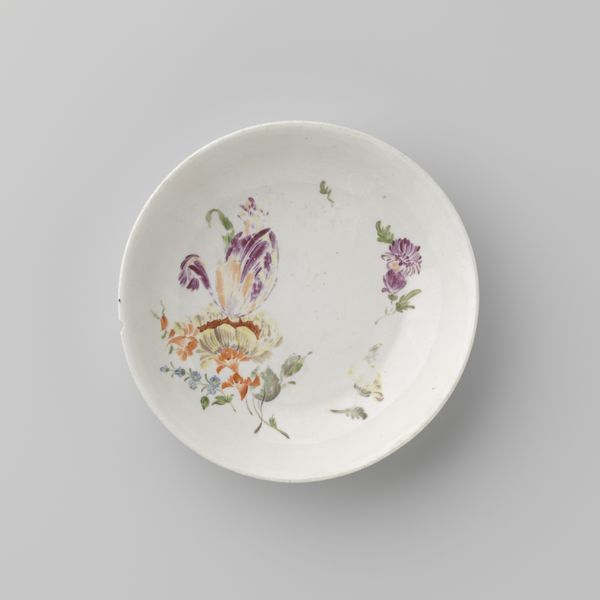
Dimensions: height 2 cm, diameter 12.6 cm
Copyright: Rijks Museum: Open Domain
Editor: This lovely porcelain plate, entitled "Schotel, beschilderd met drie boeketten en servetwerk", hails from the late 1770s or early 1780s, courtesy of the Loosdrecht porcelain factory. The delicate floral paintings and the blue latticework give it such a refined feel. What stands out to you most about this piece? Curator: Well, first and foremost, I consider the means of production. Loosdrecht, though renowned, wasn't as wealthy as Sèvres. That constraint likely dictated a more pragmatic approach to materials and design. Consider that blue border; it’s mimicking the more costly, ornate edging of higher-status porcelain. The ‘servetwerk’, or the latticework pattern, would have been much faster and easier to apply than intricate hand-painted details. Editor: So, you're suggesting the design choices reflect the limitations of the manufacturer? Curator: Precisely. It’s Rococo in spirit, with its asymmetry and floral motifs, but the labor and materiality are very much about cost-effectiveness. Where were these flowers painted, and by whom? What were their working conditions? Who was buying these plates, and were they displaying them or using them daily? These objects can teach us so much about the social history of consumption. Does looking at it this way change how you see the object? Editor: Definitely. It moves it beyond just being a pretty plate. Now, I'm thinking about the porcelain-makers and the people who used this. Curator: Exactly. By thinking about production, consumption, and materiality, we move beyond purely aesthetic concerns and see the object as a product of labor within a specific social and economic context. Editor: Thanks for broadening my perspective. I'll never look at decorative art the same way again. Curator: My pleasure! Examining the labour and material culture behind an object can truly illuminate its significance.
Comments
No comments
Be the first to comment and join the conversation on the ultimate creative platform.
